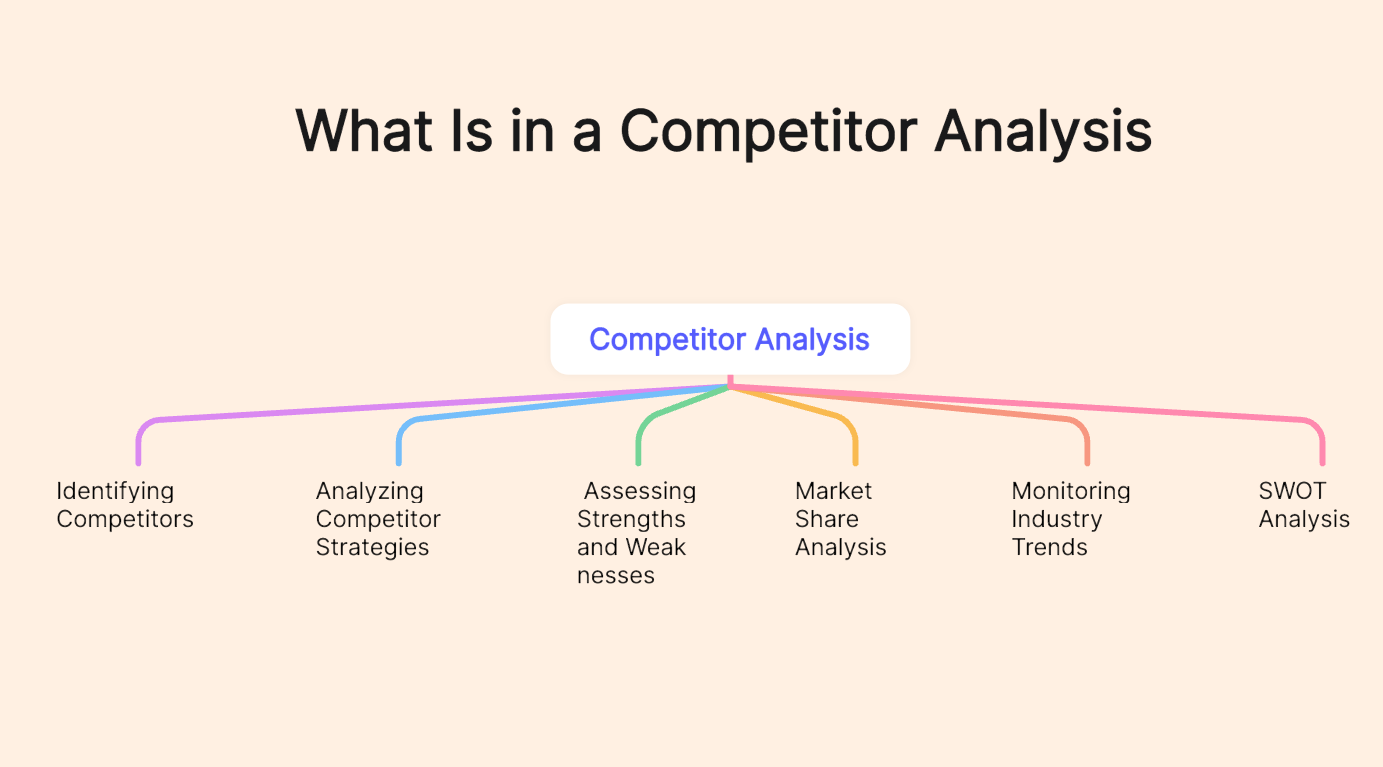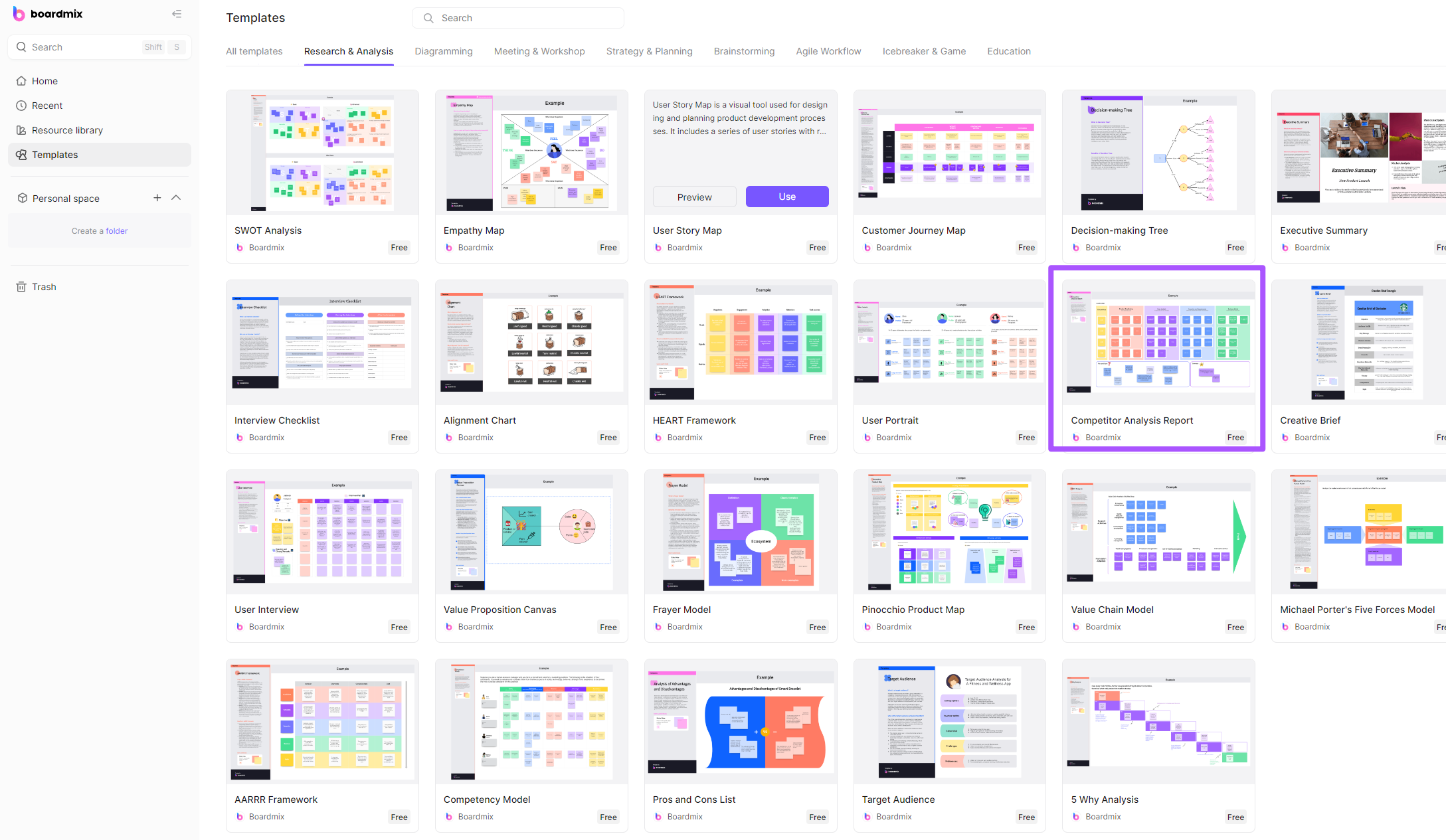In the fast-paced and ever-evolving world of business, companies are continually seeking ways to gain a competitive edge. One of the key strategies in achieving this edge is a thorough competitor analysis. This process involves the systematic examination of competitors to gain insights into their strategies, strengths, weaknesses, and overall market positioning. By understanding the competitive landscape, businesses can make informed decisions that propel them ahead. This article delves into the intricacies of competitor analysis, exploring its components, benefits, and the indispensable role it plays in strategic decision-making.
Part 1. What is Competitor Analysis?
Competitor analysis is a strategic management process that involves evaluating and understanding the dynamics of rival businesses within the market. It goes beyond merely acknowledging competitors' existence; it seeks to uncover critical information about their strategies, capabilities, performance, and market presence. The ultimate goal is to leverage this knowledge to enhance a company's own competitive position and achieve sustainable success.
Part 2. What Is in a Competitor Analysis?
A competitor analysis involves a systematic examination of rival businesses, exploring their strategies, strengths, weaknesses, and market positioning. Key components include:
1. Identifying Competitors: The first step in competitor analysis is identifying both direct and indirect competitors. Direct competitors are those offering similar products or services, while indirect competitors may address the same customer needs through alternative solutions. Understanding the competitive landscape requires a holistic view of the market players.
2. Analyzing Competitor Strategies: An in-depth analysis of competitors' strategies is essential. This involves scrutinizing pricing models, marketing approaches, product differentiation, and distribution channels. By dissecting these strategies, businesses can uncover valuable insights into what works well in the market and identify areas for improvement in their own approach.
3. Assessing Strengths and Weaknesses: Evaluating the strengths and weaknesses of each competitor provides a nuanced understanding of the competitive landscape. Factors such as financial stability, brand reputation, technological capabilities, and customer satisfaction should be examined. This assessment helps identify areas where a company can capitalize on its strengths or exploit competitors' weaknesses.
4. Market Share Analysis: Determining the market share held by each competitor is crucial for gauging their influence in the industry. This analysis helps companies identify potential gaps in the market or areas where they can challenge competitors. Understanding market share dynamics is integral to devising effective strategies for growth.
5. Monitoring Industry Trends: To stay ahead, businesses must stay attuned to industry trends and changes. Competitor analysis should include monitoring shifts in consumer behavior, emerging technologies, and regulatory developments. This proactive approach enables companies to adapt their strategies to align with evolving market dynamics.
6. SWOT Analysis: A SWOT analysis is a comprehensive tool that assesses Strengths, Weaknesses, Opportunities, and Threats for each competitor. This holistic evaluation provides a detailed understanding of the internal and external factors influencing competitors. This information is invaluable for shaping a company's own strategy.
Part 3. Benefits of Competitor Analysis
Competitor analysis offers a range of benefits for businesses aiming to thrive in a competitive market. Here are key advantages:
1. Strategic Decision-Making: Competitor analysis empowers businesses to make strategic decisions based on a deep understanding of the market landscape. Insights gained from analyzing competitors can inform decisions regarding product offerings, pricing strategies, and market positioning, leading to a more competitive and adaptive business approach.
2. Risk Mitigation: Identifying potential threats posed by competitors allows a company to develop robust risk mitigation strategies. By understanding competitors' strengths and potential actions, businesses can anticipate challenges and implement measures to protect their market share.
3. Innovation Opportunities: Examining competitors' offerings reveals gaps or weaknesses that present opportunities for innovation. Whether through introducing new features, enhancing product quality, or improving customer service, businesses can leverage competitor analysis to innovate and stay ahead in the market.
4. Customer Understanding: Competitor analysis provides valuable insights into customer preferences and expectations. By studying how competitors attract and retain customers, businesses can tailor their own strategies to meet specific needs. This customer-centric approach enhances the overall customer experience and strengthens brand loyalty.
5. Benchmarking Performance: Through competitor analysis, companies can benchmark their own performance against industry standards. This benchmarking process helps identify areas where a business excels and areas that may require improvement. It serves as a valuable tool for setting realistic goals and performance metrics.
Part 4. Utilize Boardmix for Competitor Analysis
Boardmix is a cutting-edge online whiteboard solution designed to revolutionize the way teams collaborate and visualize ideas. Boardmix offers a plethora of drawing templates that facilitate brainstorming sessions, project planning, and workflow management. However, what sets Boardmix apart is its intuitive interface and user-friendly design that makes it accessible for everyone. Our robust features provide a comprehensive platform for competitor analysis. With Boardmix, you can map out your competitors' strategies, identify their strengths and weaknesses, and devise effective counter-strategies. By visualizing this data on our interactive whiteboard, you can gain deeper insights and make informed decisions that drive your business forward.
Key features of Boardmix:
- Interactive Whiteboard: Boardmix's interactive whiteboard allows users to brainstorm, sketch, and visualize ideas in real-time, fostering collaboration and creativity.
- Variety of Drawing Templates: With a wide range of pre-designed templates, Boardmix makes it easy for teams to map out strategies, workflows, or project plans.
- User-Friendly Interface: The intuitive design of Boardmix makes it accessible for everyone, regardless of their technical expertise.
- Real-Time Collaboration: Teams can collaborate on the same board simultaneously from different locations, enhancing productivity and efficiency.
- Secure Data Protection: With robust security measures in place, Boardmix ensures that your data remains confidential and protected at all times.
Conclusion
Competitor analysis is not a one-time activity but an ongoing process that is integral to a company's strategic planning. In a business environment characterized by constant change, staying ahead requires a proactive and informed approach. By embracing competitor analysis, businesses can unlock a wealth of information that guides decision-making, mitigates risks, identifies innovation opportunities, and enhances overall competitiveness. As markets continue to evolve, competitor analysis remains a cornerstone of success, providing businesses with the tools they need to navigate the complexities of the modern business landscape and thrive in a competitive world. And with tool like Boardmix, you are supposed to master the competitor analysis more easily.













